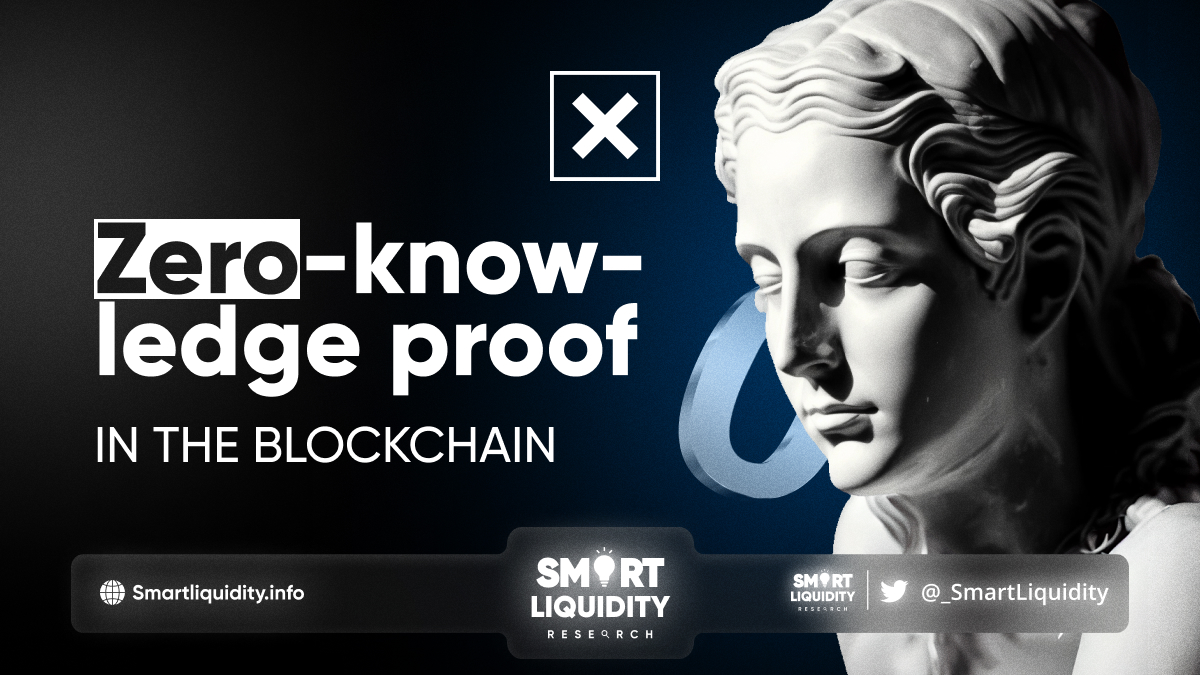Zero-Knowledge Proof in the Blockchain


The blockchain is a distributed ledger technology that provides a secure and transparent way to store and transfer data and assets. However, one of the main challenges in the blockchain is maintaining privacy, as all transactions are publicly visible and can be linked to a user’s identity. Zero-Knowledge Proof provides a solution to this challenge by allowing users to prove the validity of a transaction without revealing any sensitive information.
Zero-Knowledge Proof (ZKP) was first introduced by Shafi Goldwasser, Silvio Micali, and Charles Rackoff in their paper “The Knowledge Complexity of Interactive Proof-Systems” in 1989. In this paper, they proposed the concept of interactive proof systems, where a prover can prove the validity of a statement to a verifier without revealing any additional information.
What is Zero-Knowledge Proof?
Zero-Knowledge Proof (ZKP) is a cryptographic technique that allows one party to prove to another party that a statement is true, without revealing any additional information beyond the statement being proven. In other words, a ZKP enables a prover to demonstrate the validity of a statement to a verifier, without revealing any additional information.
ZKP is an important tool for enhancing privacy and security in a variety of applications, including blockchain technology, secure multiparty computation, and privacy-preserving data analysis, among others. In these applications, ZKP enables parties to securely verify transactions and prove the validity of statements without revealing sensitive information.
How do Zero-Knowledge Proofs work in the Blockchain?
ZKP is used in the blockchain to provide privacy while preserving the transparency and security of the network. In a ZKP transaction, a user can prove that they have a certain piece of information without revealing what that information is. This is achieved by creating a cryptographic proof, which is then verified by the network. The proof is made up of mathematical algorithms that can be verified, but not reverse-engineered to reveal the original data.
The process of creating a ZKP transaction starts with the user who wants to prove a statement. This user creates a cryptographic proof, which is then sent to a verifier, who checks if the proof is correct. If the proof is correct, the verifier can be sure that the statement is true, without actually knowing what the statement is.
Benefits of Zero-Knowledge Proof in the Blockchain
ZKP has several benefits in the blockchain world, including:
- Privacy: ZKP allows users to keep their financial information confidential, while still allowing the network to verify that the information is accurate. This helps to preserve the privacy of users, while still ensuring the transparency and security of the network.
- Scalability: ZKP can be used to increase the scalability of the blockchain network. By using ZKP, the network can verify transactions more efficiently, without having to store all the information in the blockchain. This helps to reduce the size of the blockchain and make it more scalable.
- Compliance: ZKP can help blockchain companies comply with regulations that require them to keep certain information confidential. For example, companies can use ZKP to comply with KYC (Know Your Customer) regulations, which require them to verify the identity of their users, without actually storing their personal information on the blockchain.
- Interoperability: ZKP can facilitate interoperability between different blockchain networks. By using ZKP, different blockchain networks can communicate and verify transactions without having to reveal all the information involved. This helps to promote interoperability and integration between different blockchain networks.
- Increased security: ZKP provides a secure way to verify transactions and statements without revealing any additional information. This helps to increase the security of the blockchain network and prevent malicious actors from accessing sensitive information.
Zero-Knowledge Proof Use Cases in the Blockchain
One of the most popular zero-knowledge proof systems used in the blockchain is ZK-SNARKs (Zero-Knowledge Succinct Non-Interactive Argument of Knowledge). ZK-SNARKs are a type of proof system that allows for the verification of information without revealing the underlying data. This makes it possible to create private transactions that can be verified by the network while preserving the privacy of the user’s financial information.
The use of ZKP eliminates the need for a trusted third party to verify transactions, as the network can validate the proof without knowing the underlying data. This makes the blockchain more secure, as there is no single point of failure that can be targeted by malicious actors.
In addition, ZKP can also be used to create private smart contracts. Smart contracts are self-executing contracts with the terms of the agreement between buyer and seller being directly written into code. However, smart contracts are public and can be viewed by anyone, which may reveal sensitive information. By using ZKP, smart contracts can be made private, preserving the privacy of the terms of the agreement.
However, it’s worth noting that zero-knowledge proofs are not without limitations. One of the main challenges with ZKP is their computational cost, as generating and verifying a proof requires significant computational resources. This can make ZKP unsuitable for certain use cases, such as low-end devices with limited computational power.
The Bottom Line
In conclusion, ZKP represents a promising development in the field of blockchain technology and has the potential to greatly enhance privacy and security in various applications. ZKP is an important innovation in blockchain technology that provides several benefits, including privacy, scalability, compliance, interoperability, and increased security. However, additional research and development is required to fully realize their potential and address the limitations of their current implementation.




